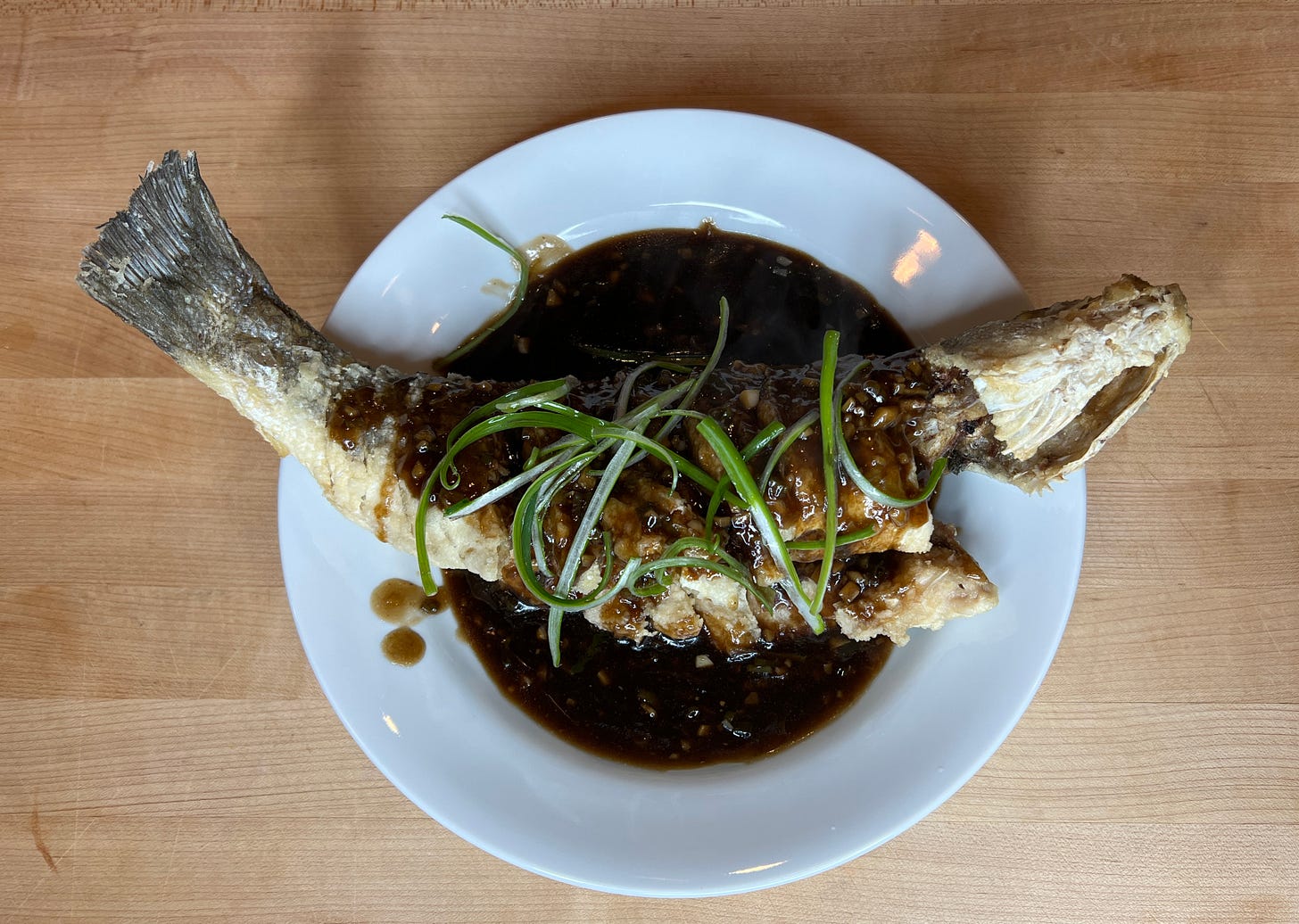Shandong, Home of Confucius
So far, we’ve looked at the cuisines of Sichuan and Guangdong provinces. This week takes us to Shandong, the origin of Lû cuisine and home of Confucius. Shandong’s food is notable for highlighting the nature of the ingredient being cooked rather than a powerful sauce. Often, dishes are simply quick fried with ginger, garlic, and scallions. There is a tendency toward saltiness with a number of notable dishes also being sweet and sour. Lû cuisine is one of, if not the oldest of the 8 great cuisines of China, dating back to at least 770 BC when this style of food began showing up in the Royal court. Along with Jiangsu province, Shandong defines Imperial cuisine.
Confucius was born in Shandong province and was an OG foodie. In his writings, he developed rules for how one should cook and approach eating. While not directly attributable to him, cutting food up before serving it directly reflects Confucian values of harmony and propriety, as well as his disdain for weapons and violence. His rules for eating also reflect a guide toward physical health by suggesting that one eats only at meal times, eats in moderation, and only eats foods that are well cooked and properly prepared. Confucianism became the official Imperial philosophy of China and Lû cuisine is infused with Confucian values.
The first dish of the week was Linyi fried chicken. The chicken is chopped up into small pieces, bones and all, and then shallow fried in oil. Some oil is drained, the chicken sauced, and then braised for a while to finish cooking. This was a very flavorful sauce without being out of balance in any way. It wasn’t too sweet, too umami, or too anything. I did learn an important lesson making this dish, never chop a chicken on a plastic cutting board. My meat board broke as a result of cleavering through the bones. I hated that thing anyway.
Tsing Tao beer is also from this region. Remember last week when I mentioned transliteration issues with some Chinese words? The spelling of Tsing Tao is based on old postal spellings and it’s actually pronounced like the place where is it is made, Qingdao. While reading Invitation to a Banquet, I learned that with Imperial dinners, it is common for guests to drink during the meal and only eat rice once they are done drinking, almost signaling their retirement with the rice.
The next meal we made was much lighter in flavor and really pointed out some of the difference in the regions we’ve visited so far. Braised prawns and Shandong-style asparagus. The flavor of the green onion and ginger was just enough to take away the edginess of the shrimp. The best way I can describe it is to say that it tastes “cleaner”.
The asparagus was outstanding. I’ve been consistently impressed by the simplicity and depth of flavor in Chinese vegetable dishes. There is just enough seasoning to really highlight the vegetable, but not to overwhelm anything. This was simply tossed with soy sauce, sesame oil, and sesame seeds.
Finally, the pièce de résistance, sweet and sour fish, served with cabbage. Both recipes are from Carolyn Phillips’ All Under Heaven. Should you decide to explore the culinary regions of China yourself, this is a great companion on your journey.
Before we sign off this week, I wanted to mention a sleeper dish. Sometimes you try a dish and it rocks you. Comfort foods have a way of doing this that makes you want to come back to a dish over and over again. A couple of weeks ago I made a beef congee. Last week, I made a chicken and ginger version. Both were made in my Instant Pot, taking maybe 5 minutes of hands on effort. Each week I was able to eat lunch all week on the output of 1 cup of rice and 1 pound of meat. Congee is absolutely heartwarming and very budget friendly. Here’s a recipe to get you started.
Next week we’ll be exploring a particularly unique regional cuisine as well as previewing the second half of the focus for Home Cooked Happiness. Stay tuned!








